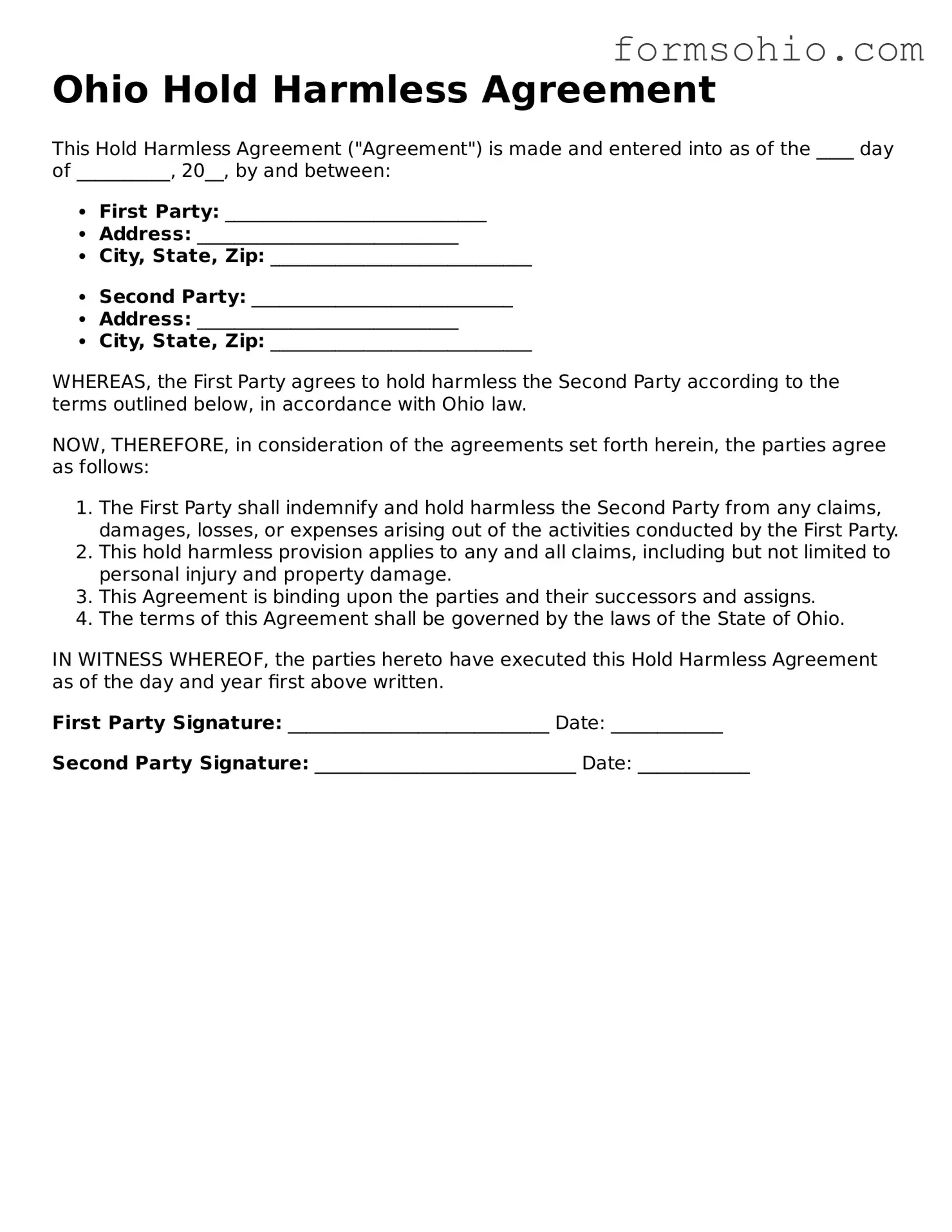Filling out the Ohio Hold Harmless Agreement form can be straightforward, but many individuals make common mistakes that can lead to complications. One frequent error is failing to read the entire document carefully. This oversight can result in misunderstandings about the terms and conditions outlined in the agreement.
Another mistake is not providing accurate information. Whether it’s personal details or descriptions of the activities involved, inaccuracies can render the agreement ineffective. Always double-check names, addresses, and dates before submission.
Many people neglect to sign the form. A signature is crucial for the agreement to be valid. Without it, the document holds no legal weight. Additionally, failing to date the form can create confusion regarding when the agreement was made.
Some individuals assume that a verbal agreement suffices. This is not the case. The Hold Harmless Agreement must be in writing to be enforceable. Relying on a handshake or a verbal promise can lead to disputes later on.
Another common error is overlooking the scope of the agreement. It’s important to clearly define what activities or incidents are covered. Vague language can lead to misunderstandings and potential liability issues down the line.
People often forget to consult with legal counsel. While it may seem unnecessary, getting professional advice can help clarify any uncertainties and ensure that the agreement meets all legal requirements.
Moreover, some individuals fail to keep a copy of the signed agreement. Retaining a copy is essential for reference in case any disputes arise. Without documentation, it becomes challenging to enforce the terms of the agreement.
Misunderstanding the implications of the agreement is another frequent mistake. Some may believe that signing the Hold Harmless Agreement absolves them of all responsibility. This is not true. Understanding the limits of the agreement is crucial.
Lastly, people sometimes rush the process. Filling out the form in haste can lead to errors and omissions. Taking the time to complete the form carefully can prevent future complications.
By avoiding these common mistakes, individuals can ensure that their Hold Harmless Agreement is effective and serves its intended purpose. Careful attention to detail and a clear understanding of the agreement will provide peace of mind.
